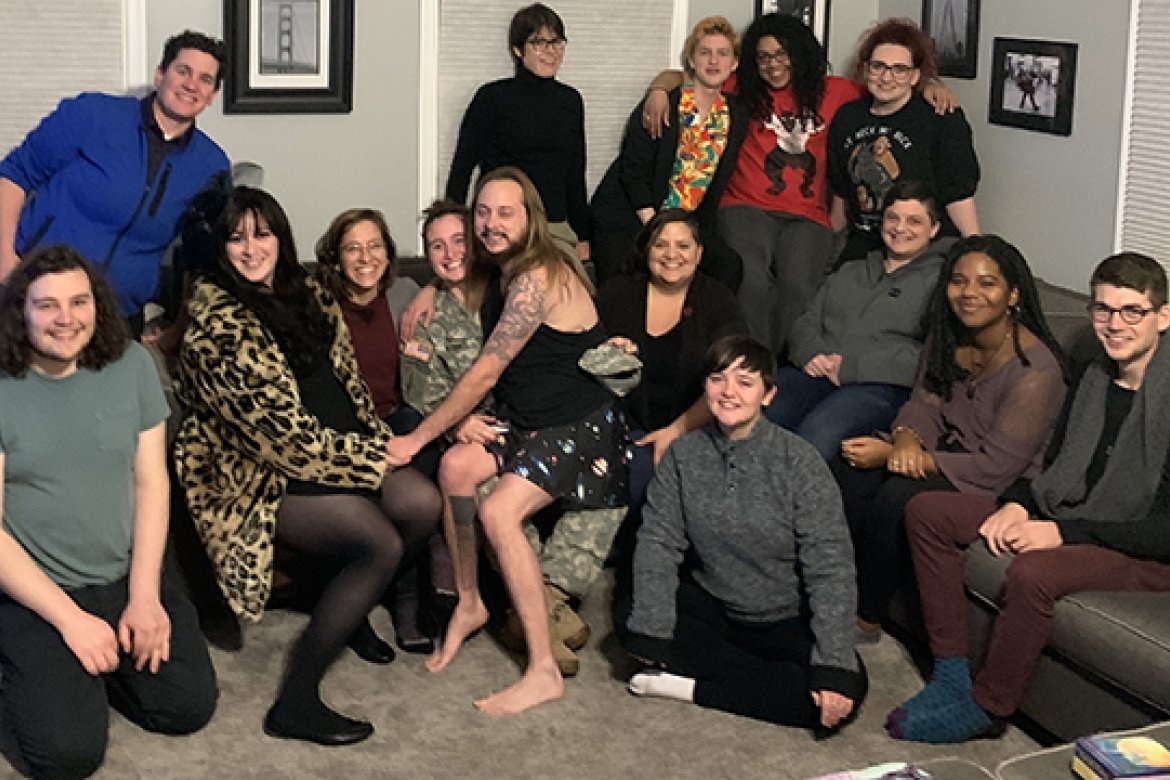Betwixt and between

M. Paz Galupo of Towson University, talked about the ways to capture the complexity of identity and represent those who do not fit into boxes.
By Keely Sexton
Many transgender and nonbinary individuals describe their experiences as existing in a liminal space, beyond the normative boxes of man or woman, straight or gay. Living in the world beyond those simple constructs is both a struggle and a gift, according to M. Paz Galupo, professor of psychology at Towson University.
The way in which many people understand gender and sexuality is in reference to the normative categories, said Galupo. But when those labels fail, creative language blossoms.
“Those who are nonbinary or trans exist beyond those labels, not between,” said Galupo, who is also the director of the Sexual & Gender Identity Lab at Towson. “Therefore they tend to express their identities and attractions with amazing complexity.”
Galupo has made a career out of learning the different ways in which those who don’t fit neatly into boxes, or map easily onto continuums, express their affinities. They presented their findings at Mount Holyoke College’s 18th Hastorf lecture, which was established to honor the 80th birthday of Barbara Hastorf, a Mount Holyoke alumna who graduated in 1943.
They were greeted with an enthusiastic crowd of students who came to hear of their latest research.
Traditional mechanisms for assessing sexuality — e.g., the Kinsey scale or similarly framed spectra of human sexuality — assume a fixed gender identity and a zero-sum attraction to a binary set of genders: If one is more attracted to (presumably cisgender —that is, non-transgender) men, then one is, by definition of the scale, less attracted to (presumably cisgender) women. There is no space for the individual to exist outside the binary state nor to be attracted to anyone who may not fit into the same.
One of Galupo’s participants put it succinctly: “I have come to realize I am attracted to male-identified people, including my female-bodied partner. The [Kinsey] scale asks me to talk about the sex characteristics of the people I am attracted to, not their gender identity or presentation.”
Another drew a metaphor: “If the Kinsey Scale is Earth, I’m floating far away outside of the galaxy,” they said.
So Galupo, with the help and feedback of their students, developed a new gendered sexuality scale that disaggregates sex and attraction. The gendered sexuality scale was developed with queer and nonbinary identities in mind. The scale has six different dimensions that asks respondents to rate on a scale of 1 to 7 their attraction to women, men, feminine, masculine, androgynous and gender-nonconforming people separately.
“We wanted to eliminate the continuum — that if you are attracted to masculine people you are by definition less attracted to feminine people. We also created a rating that focused on the beloved, not the gender identity of the respondent,” Galupo said.
The response has been enormously positive from queer and nonbinary individuals and heterosexual individuals, all of whom see themselves represented in the scale.
“This is the first survey I’ve seen that addresses attraction to gender presentation, rather than just sex parts. It definitely applies to me,” said one respondent in the study.
Galupo’s findings represent a breakthrough for those for whom traditional scales of gender and sexuality have failed. More than giving those individuals voice where they have historically been silenced, the scale also is a tool that scientists can use to more accurately represent the full human experience.
“I really want to root our theories and understandings based on lived experience,” Galupo said. “We know that if we’re looking at those lived experiences, we’re going to glean so much more about sexuality and gender in general.”